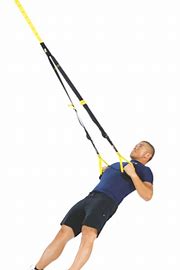Weight Lifting over 50
- Jeannine Jubeck
- Mar 11, 2021
- 3 min read

You don't have to be in great shape to get started lifting weights. And you don't have to have a lot of equipment either. A great workout can involve body weight exercises, just a few dumbbells to start, some bands and a stability ball.
Why strength train over 50?
As we age we lose a lot of strength and muscle. In fact, on average men and women lose 3-5% of muscle mass per decade after 30! So do the math. In 20 years, you could lose up to 10% of muscle by the time you're 50. There are two types of muscle fibers-fast twitch and slow twitch. We lose both over time. Slow twitch fibers help with activities such as walking and any sustained aerobic activity. Fast twitch fibers are used for more explosive activities like jumping or getting out of a chair. So, if we lose 10% of these muscles it can affect our ability to do every day activities. You are also more likely to fall and or become injured as a result. So it is especially important to target both muscle fibers. There are very specific programs to help you strengthen all your muscles so you don't lose them.
Before you jump into a workout plan, be sure to check with your physician first to be sure there are no underlying conditions that would prevent you from training. Secondly, start with a personal trainer. A trainer can customize a program for you, modify exercises that may be dangerous if you have any injuries and they will also be sure you are doing them correctly, so you get the most benefit. A good trainer will start where you are today and slowly progress you along the way.
Older adults who have been sedentary for many years should, in most cases, start with body weight exercises or very low weights and then move to heavier weights and heavier resistance bands.
How Often Should I Train As An Older Adult?
To really see and feel the benefits I recommend a minimum of 3 days a week. Always allow at least 24 hours between workouts for recovery. Workouts can be broken up into upper body and lower body or push and pull exercises for each training session. This prevents the muscles from being worked too hard in the beginning and helps prevent injuries.
Core exercises can be performed daily as long as there is not too much muscle soreness. Core strengthening exercises help your entire body. Think of the core as the mast on a ship. If the mast is weak, anything anchored by that core is also going to be weak and more likely to be injured.
How long should a workout be?
In the beginning start with 30 minutes and work up to an hour as you get stronger. Multi joint exercises are a good way to get started in a short period of time. Do squat presses, lunge curls and dead lifts. Always focus on form. If your form fails after 6 reps, stop, rest and regroup before beginning another set.
HowMuch Weight Should You Lift?
Lift what you can do for 10 reps with good form. If you can't do that, lower the weight. If you are doing 15 reps easily with good form, then you can probably raise the weight.
The Best Exercises for Men and Women Over 50
Squats
Elevated plank
Side Plank
Glute Bridge
Clam Shells
Counter Top Push Ups
Rows
What about Aerobics?
Aerobics are important as well for a good all around fitness program. They help build a stronger heart, lower cholesterol and prevent many chronic illnesses. What type of exercise should you do? Whatever you enjoy. I love to cycle. You may enjoy steppers or spin classes inside. Do what is fun and convenient, you are more likely to do it.
Will Aerobics or Weight Training Help Me to lose More Weight?
In studies where people were seperated into three groups: weight training only, aerobics only and weight training and aerobics combined, all lost weight. However, the group that did weights as well as aerobics lost the most.
What about stretching?
Flexibility should be part of any training program. A good trainer will find out where your range of motion limitations are and develop a stretching protocol based on that. It could be shoulders, hips, glutes or any other area. Tight muscles are more likely to cause injury...so do your stretches!






